SUMMARY
This is AI generated summarization, which may have errors. For context, always refer to the full article.
- Super typhoon victims desperate for help
Days after super typhoon Yolanda (international name Haiyan) slammed through Central Philippines, aid is trickling in slowly. It’s not enough for people in need of food, water, and medicine. Dazed survivors roam the streets, scouring for food food among the debris. In Tacloban City, there’s anarchy on the streets: people turn to looting just to survive. Local officials say in this city alone, they fear up to 10,000 people have been killed. In many areas ravaged by the typhoon, some communication lines are restored but remain unreliable. Survivors hand out letters to passers-by and reporters, asking them to tell their families they are alive. Worried Filipinos also turn to social media to get news about their relatives’ fate. Beginning Saturday, the social welfare department offered free satellite Internet service in Tacloban. Free calling stations in some areas are open for public use.
On Monday, November 11, President Benigno Aquino declares a state of national calamity. In a nationwide address, he also appealed to survivors in the hardest-hit areas to cooperate with rescue workers. Aquino also said the government approved P1.1 billion for the quick response funds of the social welfare department and the public works department. The declaration of a state of calamity allows the government to control the prices of basic goods and commodities for affected areas. The government can also access funds for rescue, relief and rehabilitation efforts.
Read Related Stories:
Yolanda Survivors Desperate For Aid
Aquino Declares State of Calamity
Zoraida Weather Update - Wet weather to further stress Haiyan survivors
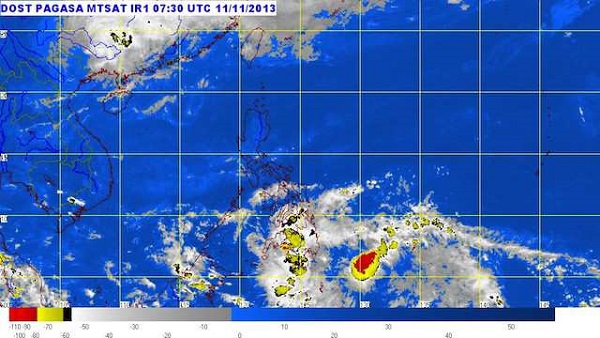
Just days after a super typhoon slammed into Central Philippines, another weather disturbance enters the Philippine area of responsibility. State weather bureau Pagasa says tropical depression Zoraida is located 216 km southeast of Hinatuan, Surigao del Sur. It’s forecast to move northwest at 30 km/h. The track of the tropical depression takes it to some of the areas damaged by super typhoon Yolanda, which affected more than 9. The regions of Davao, Caraga, Northern Mindanao, Zamboanga Peninsula, ARMM, North Cotabato, Central and Western Visayas, Northern Palawan and the islands of Camiguin, Cuyo, and Samal will have rains with gusty winds and moderate to rough seas.
The rest of Palawan, Visayas, and Mindanao will experience cloudy skies with light to moderate rainshowers.
Read on the latest update. - Don’t call, just text
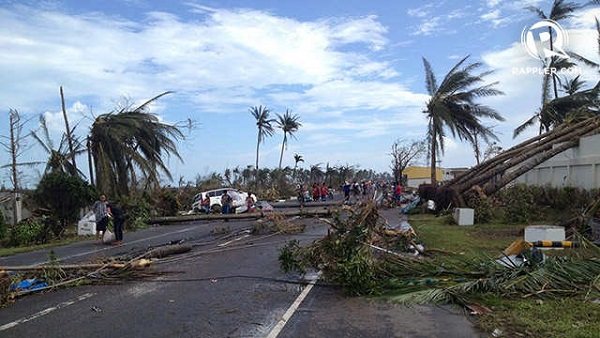
Up to 70% of cellular services in Tacloban City had been restored as of Monday afternoon, November 11, 3 days after Typhoon Yolanda (international codename: Haiyan) devastated Visayas. But Cabinet Secretary Jose Rene Almendras appealed to users not to call their loved ones, but to simply send text messages. Almendras said voice calls occupy a lot of bandwidth and network jams may be possible. With most communication lines down in the immediate aftermath of the typhoon, worried Filipinos used social media to look for their loved ones in the devastated areas. On Saturday, social welfare officials helped survivors gain access to social media so they could inform their families they were alright.
You can help Rappler map cell signals in areas affected by Yolanda. Please go to this page.
Read more on Rappler. - WHO on handling corpses during disasters
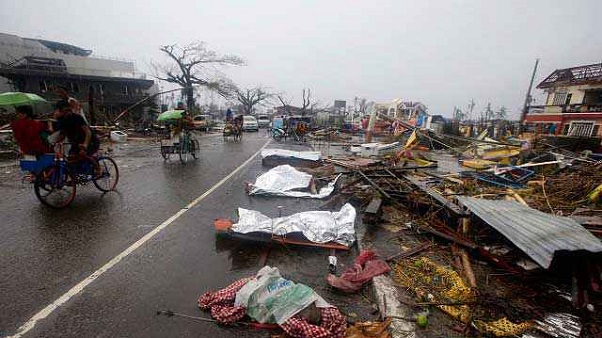
The World Health Organization (WHO) urged the government to immediately collect and bury the bodies lying on the streets in the aftermath of super typhoon Yolanda. Aside from posing a risk of communicable disease, the WHO said it is important to dispose the dead bodies because of the psychological trauma to those “witnessing death on a large scale.” Among other things, the WHO recommended separate viewing locations for the identification of the bodies and for grieving purposes. In Tacloban City, where the Philippine Red Cross estimated at least 1,200 to be dead, WHO standards require an area of over 2,000 square meters if it is to be used to display bodies for identification. The organization also discouraged burial in common graves and mass cremation, and preferred burial over cremation. It released a set of guidelines for the proper handling of the bodies.
Read the full story on Rappler. - Baby born amid disaster
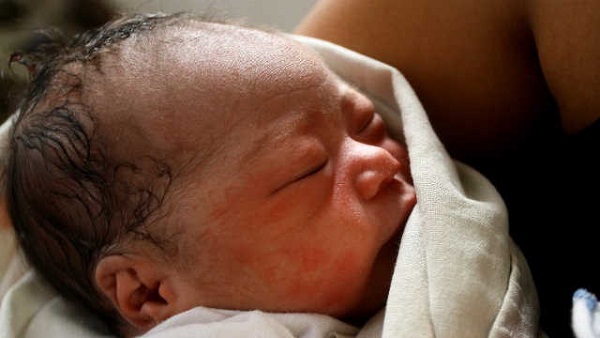
Amid the disaster, there’s a glimmer of hope. Emily Sagalis cried tears of joy after giving birth to a “miracle” girl in the typhoon-ravaged city of Tacloban. The baby was born Monday, November 11, in a destroyed airport compound turned makeshift medical center. The 21-year-old new mother said she will name her child after her mother, who was swept away when giant waves surged into their home. She remains missing. Emily’s husband, Jobert, recounted how a giant wave carried their wooden home inland, washing all of the family outside. He found his wife floating among the debris. They were carried away for hours until the water subsided. Early Monday, Emily began labor, but the couple had to walk several kilometers before a truck driver offered them a ride.
“She is my miracle. I had thought I would die with her still inside me when high waves came and took us all away,” Emily said.
Read the full story on Rappler. - Stunning video of raging storm
Video captured by the team of CNN’s Andrew Stevens showed the raging power of super typhoon Haiyan in Tacloban City. The storm, which packed winds of over 250 km/h, slammed into houses, forcing doors and windows open. Terrified residents huddled together in a sturdy building, praying for the howling winds to die down. Later on, water flooded the streets, as the storm surge had begun to ravage the city. A family trapped in the first floor of their home break down a window for escape. With the waters quickly rising, fellow survivors help evacuating the family, using a mattress as a makeshift raft. When the winds died down and the waters receded, fallen trees and debris showed the full force of the storm’s fury.
- Why Haiyan left so much death and destruction
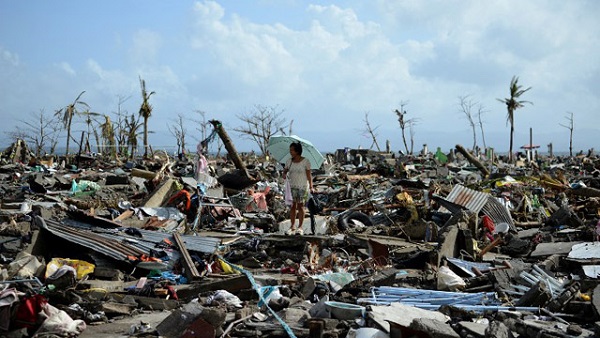
Despite early warnings — including an address from the President on the eve of the typhoon — typhoon Haiyan left many Visayas regions ravaged. The Washington Post reports a combination of factors contributed to the massive destruction: geography, population density, poverty, and government. One of the hardest-hit areas, Tacloban City, lies on a funnel-shaped bay in the Leyte Gulf. Its location and the shape of the bay made the city vulnerable to storm surges and put it squarely in the path of the typhoon’s disastrous winds. The massive loss of life though could have been prevented if mass evacuations had been done. But Tacloban City is located in a mountainous island where moving people out was not possible. Shelters used as evacuation centers also collapsed under the brunt of the storm. The Associated Press also said poverty, flimsy infrastructure, and a weak central government hampered preparation efforts.
Despite the massive devastation — with a death toll feared to reach 10,000 in one province alone — the estimates wouldn’t put Typhoon Haiyan in the list of top 35 deadliest tropical cyclones. The 1970 Bhola Cyclone in Bangladesh that killed 300,000 to 500,000 is considered the deadliest on record.
Read the full story on Washington Post. - PH negotiator: End climate crisis ‘madness’
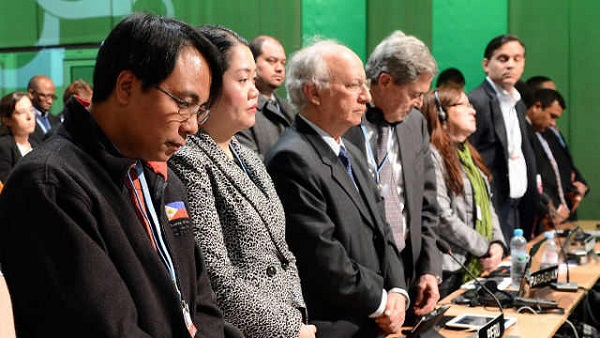
On the opening day of the UN Climate Change Conference in Poland, Naderev Saño of the Philippines’ Climate Change Commission urged for an end to the climate crisis “madness” and pledged to fast at the talks until there is “a meaningful outcome” to the discussions. Saño’s speech comes after super typhoon Haiyan wreaked havoc across the Central Philippines. In his speech, he said, “What my country is going through as a result of this extreme climate event is madness. The climate crisis is madness. We can stop this madness right here in Warsaw.” World nations launched a new round of talks in Warsaw to pave the way for a 2015 deal to cut climate-altering greenhouse gas emissions. Saño said that while the Philippines is working on its own renewable energy program, it struggles with it. He challenged developed countries to aid the Philippines by providing an estimated US$500 million for part of the incremental cost for the Philippines’ feed-in tariff. The 12-day United Nations talks opened amid a slew of warnings about extreme weather phenomena unless greenhouse gas emissions are curbed.
Read the full story on Rappler. - 60 Minutes apologizes for Benghazi report

The iconic American TV investigative news program “60 Minutes”, which airs on CBS, apologized for its Benghazi story two weeks before. Reporter Lara Logan went on air to express regret for a story on the attack on the American diplomatic mission in Benghazi, Libya last year. Logan said their main source for the story, Dylan Davies, had misled the program’s staff. “It was a mistake to include him in our report. For that, we are very sorry,” Logan said. CBS took down the report from its site and scrubbed its Twitter feed. The New York Times drew parallels between this case and CBS’s flawed 2004 report on President George W. Bush’s time in the National Guard. The correspondent on the Bush report was CBS’ equally iconic news anchor Dan Rather, who resigned from the network in 2005. The NYT notes, “Overall, cries of “conservative bias” are not nearly as resonant as cries of “liberal bias” were in 2004…” Media critics called for CBS to initiate an independent investigation of mistakes in the reporting process. CBS had not ordered an investigation.
Read the full story on NY Times and Huffington Post. - Iran agrees to ‘roadmap’ for UN inspections
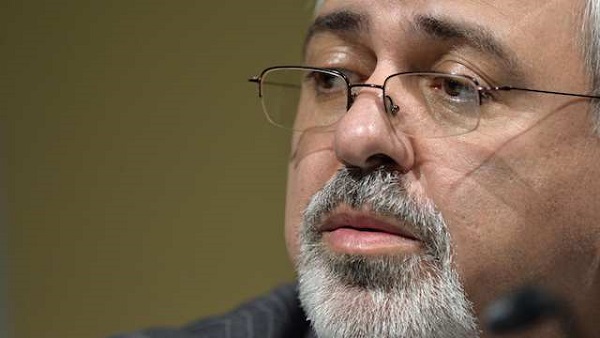
Iran agreed with a UN nuclear watchdog on a “roadmap for cooperation” to inspect its disputed program. Iran’s agreement with the International Atomic Energy Agency (IAEA) requires the country to provide information on all new research reactors and identify sites for the construction of power plants and for uranium enrichment. Iran’s nuclear chief Ali Akbar Salehi said IAEA inspectors would be allowed to visit a heavy water reactor under construction in Arak and the Gachin uranium mine in the south. At least a year from completion, the Arak reactor is a major source of concern for Western powers, who fear the plutonium it will produce could provide Iran with a second route to an atomic bomb. But Iran insists it wants to produce isotopes solely for medical and agricultural purposes. Despite failing to clinch a deal in Geneva over the weekend, diplomats say world powers are close to reaching a landmark interim deal to curb Iran’s nuclear program in return for sanctions relief.
Read the full story on Rappler.
Add a comment
How does this make you feel?
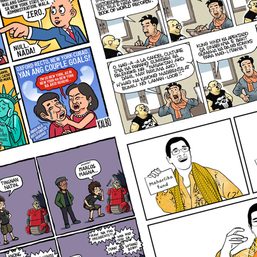


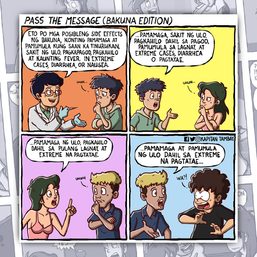

There are no comments yet. Add your comment to start the conversation.